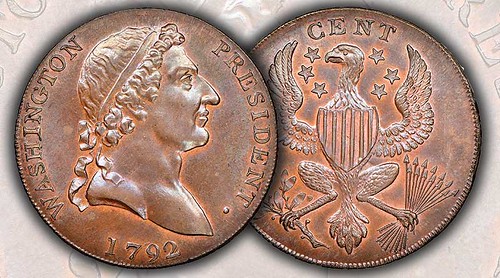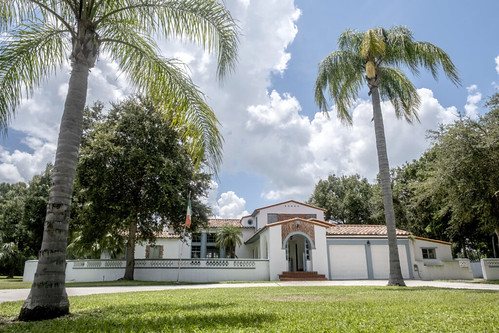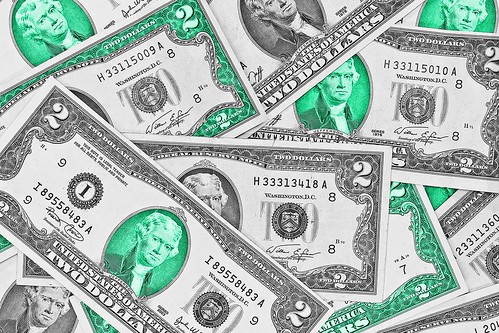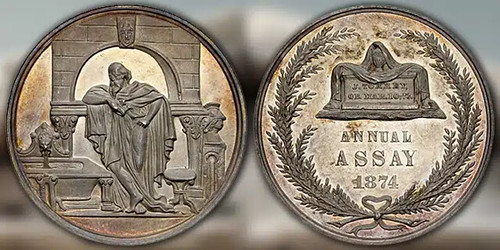
PREV ARTICLE
NEXT ARTICLE
FULL ISSUE
PREV FULL ISSUE
LOOSE CHANGE: AUGUST 20, 2023Here are some additional items in the media this week that may be of interest. -Editor Michael Garofalo published the second installment of a multipart article for Greysheet on coppers depicting George Washington. Here's an excerpt - see the complete article online. -Editor 1792 ROMAN HEAD CENTS The famous sculptor Horatio Greenough created a huge statue of George Washington, depicting him as a Roman emperor on a throne. Portraying revered persons as Roman emperors was a very popular pursuit in the 18th and early 19th centuries. Greenough's statue was displayed on the U.S. Capitol grounds for many years. At Obediah Westwood's private minting facility in Birmingham, England, a new Washington copper coin was struck in 1792. The obverse depicted George Washington, with a laurel wreath on his head and facing right. Washington was made to look as much like a Roman leader as possible. The words "WASHINGTON," and "PRESIDENT," flank the portrait on either side and the date "1792," is below. The reverse depicts a very scrawny Small Eagle, with six five-pointed stars between its upraised wings, arrows and an olive branch in its talons and the word "CENT" at the upper periphery.
To read the complete article, see:
To read the earlier E-Sylum article, see:
Here's an excerpt from a Vero Beach, FL article about the mansion where SS Central America project leader Tommy Thompson lived while hiding from the U.S. Marshals. -Editor The Gracewood Mansion, a historic six-bedroom estate located on 5 acres of land off Route 60 just west of the Twin Pairs, will put Vero Beach on the world map once more in a major documentary about millions of dollars in missing gold shot by the National Geographic in cooperation with the BBC. The documentary, which is scheduled to be aired on the National Geographic cable channel as well as on the BBC in about a year, focuses mainly on Gracewood's most infamous recent resident, treasure hunter Tommy Thompson, who managed to hide out in plain sight in Vero Beach for almost a decade in a case still shrouded in mystery and intrigue. Thompson left Vero Beach hurriedly in 2012 after a federal bench warrant was issued for him in connection with numerous civil suits, and he was arrested about a year later, along with his companion, Alison Antekeier, at a Boca Raton hotel where he had holed up. While he lived with Antekeier in Vero Beach at the Gracewood Mansion, Thompson kept his name off all real estate documents and utility services contracts, instead paying a local real estate agent, Vance Brinkerhoff of Coldwell Banker Paradise, in cash to provide those services for him. Brinkerhoff recalls that Thompson paid his monthly $3,000 rent in smelly, musty $100 bills. Otherwise, Thompson moved about Vero Beach openly, always paying cash for whatever he bought – he loved shopping at Walmart.
To read the complete article, see:
Gosia Fort passed along this article on "6 Forgotten Pieces of U.S. Currency." Thanks. Five of the six are obsolete denominations of coins and paper money. The sixth is the still-produced but seldom-seen $2 bill. There are no facts here that most collectors wouldn't already know, but it's nice to see the discussion in popular media. -Editor In an increasingly cashless society, all physical currency has become comparatively rare: It's never been easier for most people to simply use their debit card, Venmo, or saved payment information to complete most of their purchases. Even so, approximately $1.87 trillion in physical U.S. currency is still in circulation — the vast majority of which naturally consists of the six most common notes ($1, $5, $10, $20, $50, $100). They weren't always the most common, however, as America has produced many now-rare forms of currency throughout its financial history. Here are six of them.
To read the complete article, see:
A CoinWeek article by Roger W. Burdette discusses the background of the the United States Assay Commission with a focus on the 1874 Assay medal. Here's an excerpt - see the complete article online. -Editor The Mint Act of 1792 established the United States Assay Commission to test and verify weight and purity of the country's coins. Reports went directly to the president and were an integral part of maintaining and promoting the reliability of the new nation's gold and silver coins. The Commission met once annually and was composed of two senior government officials plus several private experts from academic or business fields. Members were reimbursed for their travel and lodging expenses, but there was no honorarium or other payment. In 1860, United States Mint Director James Ross Snowden decided to give each Commission member a half-dollar size silver medal.
Correspondence between Pollock and current Mint Director Henry Linderman in 1874 presents an unusually detailed look at the
The obverse shows the Greek philosopher Archimedes contemplating the displacement of water by an object, resulting in his discovery of
To read the complete article, see:
Wayne Homren, Editor The Numismatic Bibliomania Society is a non-profit organization promoting numismatic literature. See our web site at coinbooks.org. To submit items for publication in The E-Sylum, write to the Editor at this address: whomren@gmail.com To subscribe go to: https://my.binhost.com/lists/listinfo/esylum All Rights Reserved. NBS Home Page Contact the NBS webmaster 
|



